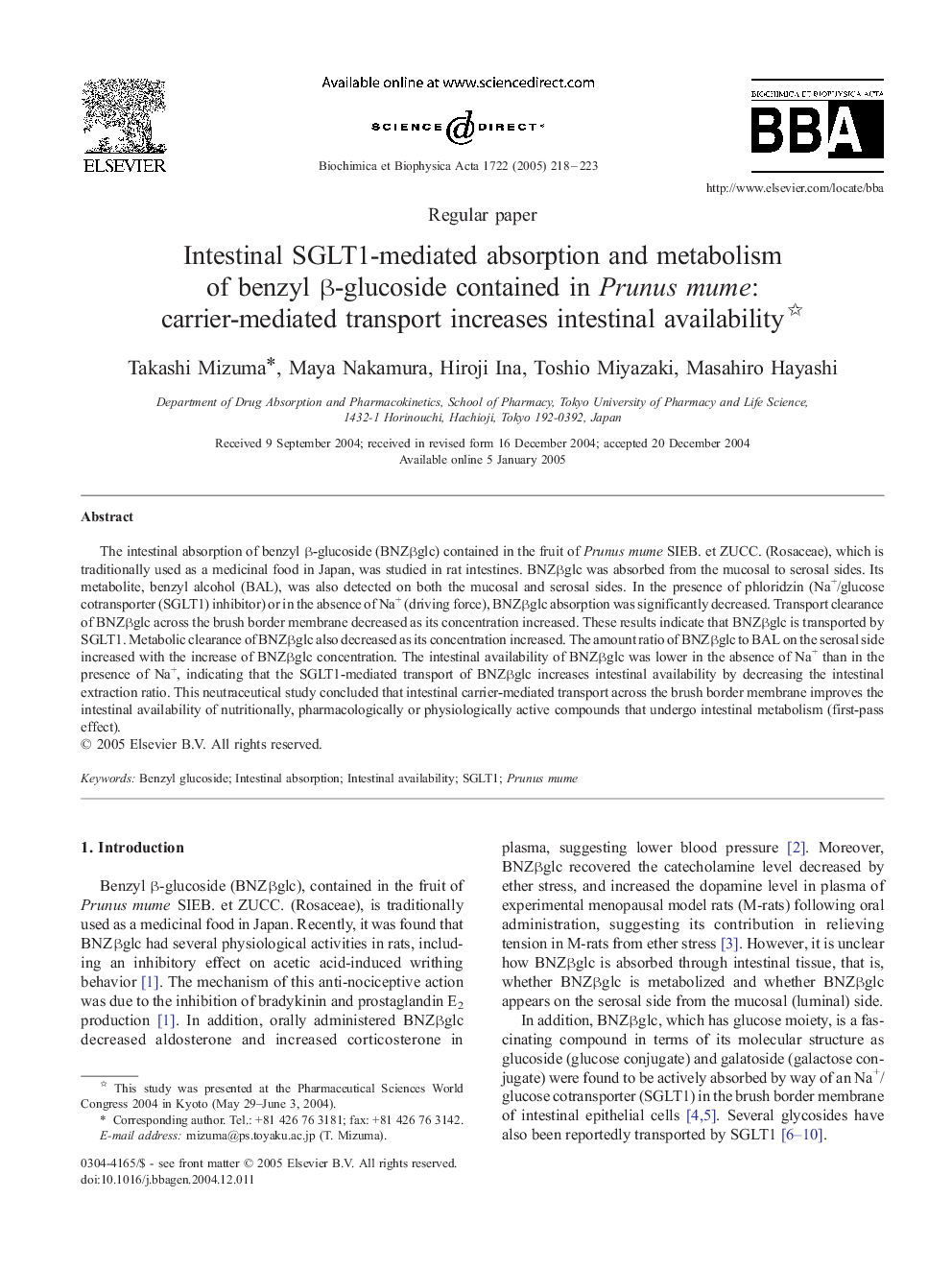| Article ID | Journal | Published Year | Pages | File Type |
|---|---|---|---|---|
| 10801060 | Biochimica et Biophysica Acta (BBA) - General Subjects | 2005 | 6 Pages |
Abstract
The intestinal absorption of benzyl β-glucoside (BNZβglc) contained in the fruit of Prunus mume SIEB. et ZUCC. (Rosaceae), which is traditionally used as a medicinal food in Japan, was studied in rat intestines. BNZβglc was absorbed from the mucosal to serosal sides. Its metabolite, benzyl alcohol (BAL), was also detected on both the mucosal and serosal sides. In the presence of phloridzin (Na+/glucose cotransporter (SGLT1) inhibitor) or in the absence of Na+ (driving force), BNZβglc absorption was significantly decreased. Transport clearance of BNZβglc across the brush border membrane decreased as its concentration increased. These results indicate that BNZβglc is transported by SGLT1. Metabolic clearance of BNZβglc also decreased as its concentration increased. The amount ratio of BNZβglc to BAL on the serosal side increased with the increase of BNZβglc concentration. The intestinal availability of BNZβglc was lower in the absence of Na+ than in the presence of Na+, indicating that the SGLT1-mediated transport of BNZβglc increases intestinal availability by decreasing the intestinal extraction ratio. This neutraceutical study concluded that intestinal carrier-mediated transport across the brush border membrane improves the intestinal availability of nutritionally, pharmacologically or physiologically active compounds that undergo intestinal metabolism (first-pass effect).
Related Topics
Life Sciences
Biochemistry, Genetics and Molecular Biology
Biochemistry
Authors
Takashi Mizuma, Maya Nakamura, Hiroji Ina, Toshio Miyazaki, Masahiro Hayashi,
